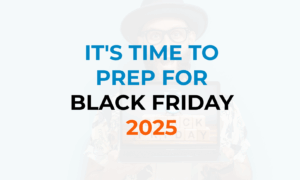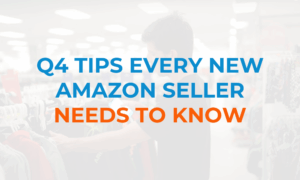Max Out Prime Day Profits
Mark your calendars: Amazon Prime Day 2025 is happening from July 8th to 11th – and for the first time ever, it’s a full four-day event. That means double the shopping time, more inventory turnover, and massive potential for Amazon arbitrage sellers!
This year, Prime Day isn’t just a sale – it’s a full-scale retail event. Prime members are looking to save on everything from back-to-school supplies to home improvement items, personal care, premium brands, and even luxury splurges. With SellerAmp SAS in your toolkit, you’re set up to move fast, make informed sourcing decisions, and turn this four-day sales surge into a profit-packed sales window.
What’s New for Prime Day 2025?
Amazon is rolling out several exciting new features this year:
- Four full days of deals: July 8–11 marks the longest Prime Day yet.
- Today’s Big Deals: Themed daily deal drops featuring exclusive offers for Prime members, including deep discounts on top brands like Samsung, Kiehl’s, and Levi’s.
- Fast-paced deal drops: New offers go live daily at midnight PDT and are available only while supplies last.
- Deals dropping every five minutes during select periods for added urgency and buyer momentum.
For sellers, this means more volatility, more product movement, and more chances to spot undervalued inventory to flip!
Why Prime Day Matters for Arbitrage Sellers
1. Prime Members Are Ready to Buy
Prime Day is one of the few times in the year when millions of Amazon shoppers are actively browsing with intent to purchase. They know the event is limited, and they’re conditioned to act quickly to snag deals – especially on household essentials, electronics, and seasonal items.
For arbitrage sellers, this creates a unique environment where:
- Listings that might normally get a few views a day suddenly see a spike in visibility.
- Products that are already well-optimized and fairly priced can sell out quickly, even without being included in an official Prime Day promotion.
- The Buy Box rotates more frequently, giving even Merchant Fulfilled and newer FBA sellers a chance to win sales.
Using SellerAmp SAS, you can quickly assess which of your products are in a good position to benefit from this traffic:
- Check how competitive your offer is compared to other sellers.
- Monitor Buy Box pricing and stock levels across sellers.
- Confirm that you’re ungated and eligible to sell a given ASIN – before you invest time or money into it!
2. Major Retailers Compete Aggressively
While Amazon is the center of attention, retailers like Walmart, Target, Best Buy and Lidl use Prime Day to launch their own aggressive sales campaigns. This means huge discounts on electronics, toys, home improvement items, personal care, and seasonal categories – all areas ripe for profitable flips!
For online arbitrage (OA) sellers, this creates a golden sourcing window:
- Limited-time offers and flash sales pop up daily – and often beat Amazon’s prices.
- Clearance and price-match events are used to lure traffic, creating opportunities to source products well below their Amazon resale value.
- Sellers who move quickly can stock up on inventory that turns over within days – or even hours!
With SellerAmp SAS, you can:
- Analyze product metrics while browsing retailer websites. Pro Tip – The Chrome browser extension makes this super easy!
- Calculate instant profit, ROI, and check for restrictions or IP issues in the Quick Info panel.
- Use your custom Tags and Notes to stay focused on items that meet your sourcing goals (e.g., minimum 35% ROI, BSR under 100,000).
3. A Great Time to Clear Old Inventory
One of the most overlooked benefits of Prime Day is the opportunity to liquidate older or slower-moving stock. The surge in buying activity across nearly every category creates an ideal environment for clearing space – whether you’re running an FBA business or fulfilling orders yourself.
Here’s why it works:
- The spike in traffic increases the visibility of your entire catalog, not just new or seasonal items.
- Repricing slightly below your usual price can be enough to trigger a sale during the rush.
- With increased customer urgency, products that previously stagnated can start to move again!
SAS helps you make smart decisions with:
- Side-by-side pricing comparisons across current sellers.
- Historical Buy Box data to help you determine your repricing strategy.
- Real-time inventory levels, so you can capitalize when competitors run out of stock.
4. Preview Future Q4 Bestsellers
Think of Prime Day as a strategic preview of Q4 – it’s your chance to see what shoppers want before the holiday season hits. Items that sell quickly in July often make a comeback during Black Friday, Cyber Monday, and December gift-giving.
Savvy sellers use Prime Day to:
- Identify patterns in what types of products are moving: toys, tech accessories, skincare, home goods, etc.
- Track specific ASINs that shoot up in sales rank or go out of stock quickly.
- Build a data-informed list of Q4 winners to source more aggressively in the fall. Pro Tip – Export your data to Google sheets to keep organized and on track.
With Keepa data processed through the Charts panel, you can:
- Monitor historical sales rank and pricing trends to avoid flukes.
- Add promising ASINs to your sourcing spreadsheet or buy list.
- Check the number of sellers over time, helping you forecast how competitive a listing might be in Q4.
So whether you’re liquidating old stock, jumping on retailer flash sales, or scouting future bestsellers, Prime Day 2025 is your chance to level up!



